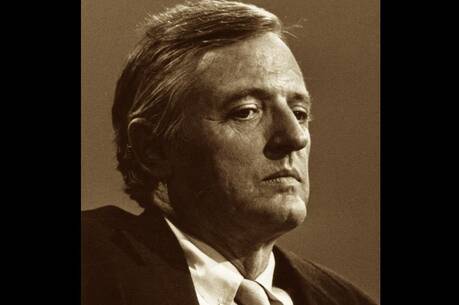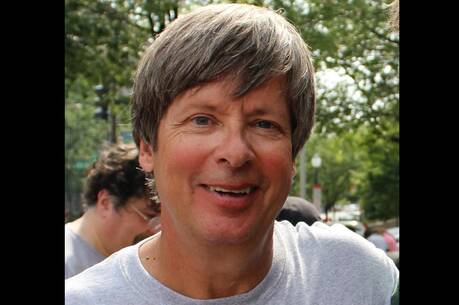New Orleans, Born Again
For most Americans, Hurricane Katrina was a disaster story with saturated coverage that ran for several weeks, starting Aug. 29, 2005, when the levees surrounding New Orleans broke under Gulf of Mexico storm surges driven into outlying lakes. Video loops of people on rooftops, squalor in the Louisiana Superdome and a good-times city reduced to a broken mud town left lasting images on the national psyche.
Katrina wrecked George W. Bush’s second presidential term. A superpower battling in Iraq and Afghanistan was incapable of rescuing people in a flooded city. This was the country that sent rockets to the moon? A more complex story began after floodwaters drained in an area seven times the size of Manhattan Island. Eighty per cent of the city had taken water, at an average level of four feet: tens of thousands of homeowners began battling insurance adjustors. Meanwhile, media and government reports focused on why: The hurricane was an act of nature (or God, as a few thundering zealots claimed, wreaking vengeance on a Babylonian river city). But human error caused the flood: the flawed design and oversight of levees by a federal agency, the U.S. Army Corps of Engineers.
That information set in motion a grinding process by which Congress and federal agencies eventually sent tens of billions of recovery dollars to the city’s slow recovery—$70 billion from FEMA alone, which shows in the widespread infrastructure work presently underway.
In the recent tenth anniversary media coverage, New Orleans stood robust with clean streets, cranes dotting the horizon, a booming digital economy and a film industry creating a city of the young. The town still has deep poverty, and nightly news is a show on urban homicide.
The New Orleans comeback was never guaranteed, as Gary Rivlin reports in his account of the political machinations in this textured and intelligent book. Most of the narrative focuses on the two years after the storm, far less on the role that Mitch Landrieu played after winning the 2010 mayoralty, at which point the federal money flow gained momentum and rebuilding accelerated. A New York Times reporter who covered the Katrina aftermath, Rivlin became a freelance, kept coming back, and in a fair-minded way captures the struggle of ordinary people remaking their lives, or losing what they had, amid the complex politics.
Rivlin’s account of the blunders by Mayor Ray Nagin (now holding an endowed chair in a federal penitentiary, for shaking down contractors) is restrained. He faults Nagin for relying on President George W. Bush to deliver recovery money, while Bush’s handlers waited for Nagin’s plan. Although Rivlin cites the crimes Nagin committed, he avoids saying outright the lesson of Katrina: that the big-person theory of history prevails. Bush was incompetent, Nagin a narcissist whose racial demagoguery secured his 2006 re-election, following which he betrayed his black political base with corruption on top of incompetence.
In contrast, L.B.J. flew straight to New Orleans in 1965 after Hurricane Betsy and told people in a darkened school that he and the country were behind them. One can imagine Bill Clinton or the elder George Bush or former Mayor Moon Landrieu (Mitch’s dad) using their formidable skills to ignite a strong response. Electing substandard people is a mirror on national or local character. Heraclitus was right: character is fate.
Rivlin uses a deft hand orchestrating a dramatis personae of politicians, planners, activists, policy advocates and grassroots change-agents across the narrative stage. I could betray a bias, as a New Orleanian who came back (blessedly) to a dry house, in saying that Rivlin fails to capture the profound role of musicians and tradition-bearers who brought the culture back—Wynton Marsalis arguably did more to save New Orleans than Nagin—but Rivlin casts a wide net without losing focus on the deep injustices borne by poor blacks, particularly those with valid leases in well-built housing projects the city chose to demolish.
The Congressionally funded Road Home program with an initial $7.5 billion outlay allowed tens of thousands of homeowners to make repairs that insurance did not cover.
Meanwhile, as Rivlin writes, the city under Nagin’s chief planner, Ed Blakely, chose a MidCity neighborhood, where homeowners with the federal grants had returned and rebuilt, to provide acreage for building a hospital-medical complex. “The city needed sixty-seven acres,” he writes, “which meant tearing down or moving 250 homes, 150 of which had been deemed ‘historically significant’ by the National Trust for Historic Preservation.” The Veterans Administration was relocating its hospital on the new site. “Blakely promised them $75 million in HUD disaster money to offset their construction costs—one-fifth of the city’s precious flex dollars.”
Decisions like that made it harder for many people to return and rebuild. Yet another strand of the Katrina narrative is how certain people with means saw the wounded city as an organism worth helping. Barnes & Noble’s chairman, Len Riggio, and his wife, Louise, provided $20 million from their family foundation “to create energy efficient homes elevated above the flood plain.” Bruce Springsteen donated $100,000 to the Common Ground project, a small activist army led by a former member of the Black Panthers.
In any nonfiction narrative with a large cast, a small number stand out by virtue of what an author sees in them. Rivlin manages the considerable feat of making a black banker and his wife, Alden and Rhesa McDonald, into three-dimensional figures who capture an arc of New Orleans history since the civil rights era. Having never met them, I found myself wondering what new surprise or revelation of personality would unfold each time they appeared.
The couple lost their home in the New Orleans East suburb; McDonald threw himself into reconstructing banking records and got the business back into service. He practiced lending to reliable, often working-class clients on careful terms. When the 2008 housing bubble broke, few of his clients suffered; he had avoided subprime loans.
When the actor Brad Pitt, who has a large house in the French Quarter, sank several million dollars into the Make It Right project to build houses of cutting-edge architecture in a devastated Lower Ninth Ward area, the banker broods. McDonald appreciated that the utility bills for one of Pitt’s Make It Right homes were a fraction of what a resident would pay in a traditional home—a huge saving in the warm months. But the banker within couldn’t square the idea of spending a few hundred thousand dollars to build a home that would be worth half that amount on the open market. “He had the money to put a lot more people in homes,” McDonald said.
Rivlin, the reporter ever searching for balance, then quotes Malik Rahim, the ex-Black Panther and leader of Common Ground, who considers Pitt “the hero of the Ninth Ward.... We couldn’t save it. But Brad Pitt, an actor, this white dude—did.”
Well, a small part of the Ninth Ward came back because of that white dude. And as Rivlin reminds us in the coda to his moving tale of trauma and recovery, large swaths of that sprawling ward have abandoned houses like a tropical ghost town. In the end, the people who made it back were the ones with the means to do so. Some of the poor managed to return; many more did not.
This article also appeared in print, under the headline “New Orleans, Born Again,” in the September 28, 2015, issue.








